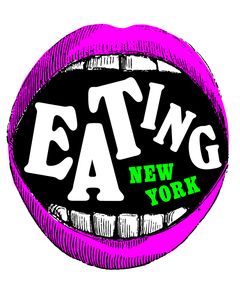New York subscribers acquired unique early entry to this story in Consuming New York, a publication that includes meals information and recommendation straight from our critics’ mouths. Enroll right here to get it in your inbox.
Photograph: Catherine McQueen/Getty Photos
The opposite day, the corporate Sq. shared some attention-grabbing knowledge with me: For the primary time since 2015 (way back to this knowledge went), the typical quantity that prospects tip at any of Sq.’s fee terminals and kiosks — and if you happen to’ve purchased something previously ten years, you understand these terminals are in all places — has dropped under 15 p.c. That features full-service eating places, the place the typical tip is right down to 14.65 p.c; and cafés, the place prospects tip a median of 14.56 p.c. (The general common throughout all sectors is 14.99 p.c.) “I believe all of us noticed a tipping bump within the pandemic,” a cheery, useful rep for the corporate instructed me over the cellphone. “Now it’s the bottom it’s been.”
There are numerous theories as to why tipping is down: tip fatigue; financial worries; the inflated worth of products, which makes a $1 tip “much less” than it as soon as was. However I thought of a current expertise at a pleasant espresso store the place I picked a $25 bag of beans off a shelf and ordered a $6 iced espresso. I used to be prompted, by default, to depart a tip of not less than 20 p.c on the acquisition: That’s a $6.20 tip for a $6 espresso. Leaving a $1.50 tip required about 4 separate faucets (“different quantity,” “customized,” and many others.). It was, greater than something, simply type of annoying.
To be clear: I don’t imply the idea of tipping is annoying. Gratuities are essentially needed, and I attempt to tip generously: 25 p.c or extra at eating places, $1 per merchandise I order at a counter-service café or bakery. What I imply is that the literal act of making an attempt to depart a tip on a small buy has develop into annoying.
The display screen methods at counter-service locations at all times supply three choices for a tip, both set greenback quantities or varied percentages of the acquisition. As a buyer, you by no means fairly know what you’re going to get. The fourth choice provided isn’t any tip in any respect. Most individuals — or not less than the general public I’ve seen whereas I’m standing in line to purchase too-expensive espresso beans — merely stroll away from the display screen at this level. This, identical to tapping the no-tip choice, is an lively selection to depart nothing further in anyway. And this, it occurred to me not too long ago, is the alternative of the expertise provided by the basic tip jar, the place the one lively selection is leaving a tip. (Opting out of tip-jar tradition is, at most, a passive selection.) What feels higher: Deciding to throw an additional greenback or two into the jar for employees who depend upon the cash to pay payments, or strolling away and pretending you didn’t see the trio of tipping prompts on a display screen?
The tip jar was a great system — till everybody stopped carrying money. Right here is my model of a modest proposal: Change the screens. Provide one choice on the finish of a transaction: “Add a tip?” Sure, I’ll suppose as I faucet. “How a lot?” I’ll enter in the correct quantity and stroll off completely satisfied.
Is there any materials distinction between this and the present system? Probably not. Is it positively assured to lift ideas for employees? We’ll by no means know if we don’t strive. However reminding us all that tipping can really feel like an act of generosity as an alternative of an obligation to be both shouldered or ignored in all probability can’t harm, both.
Join Consuming New York
Weekly meals information, straight from our critics’ mouths and only for subscribers.
Vox Media, LLC Phrases and Privateness Discover
See All



